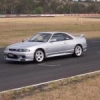Rb27/ Rb28 Vs Staying Rb26
Announcements
-
Similar Content
-
Latest Posts
-
By robbo_rb180 · Posted
Cleaner signal so timing is more accurate at all rpm also found it to start more on first rotation but could also be I've nailed prime and crank fuel. For under $400 and 30mins of your time, its a good solution especially once the optical sensor does start to play up you won't notice it until in higher rpm and it heat soaks. -
On a 400hp RB, what benefits other than "it's not 30+ years old" are you seeing from the NZ Wiring Kit trigger setup? If it were me going to change triggering, my belief would be to go for a crank trigger to remove the issues caused by what people claim is belt stretch etc, but that's from my understanding a much larger issue for super high power, rather than those in the 400hp and below club.
-
By robbo_rb180 · Posted
The NZ wiring kit is a 1/3 the price and will be perfectly fine for your application, I've ran one for 6+ years and many others have. Comes as a full plug into factory connector and the settings for a Link. https://www.nzwiring.com/index.php/product/trigger-kit/ Always comes back to the tuners knowledge and experience with a tuning platform. It takes years to become proficient and learning all aspects and capabilities. I've been using Links for 16 years now (rb and sr paltforms) and always learning something new with adding tables, diagnostics and data logging. Stay 98 for the usability and keep it simple so you can enjoy the car more. With experience I'll give you a current example of the industry I am in. They use Motec m190 and only use VE tuning when they have a torque mapping available and would solve the "PARITY" issues that plagues the category all because the muppet doing the tuning doesn't understand the platform or want to learn it and the product seller have no idea on its full capabilities ( I had a good laugh as when firing up an older car that just got completed and they didn't understand the injector scaling or how to change it for different fuel being used) -
I'm sure there are specific hygrometers for it. But if you can just throw a high enough ranged temp sensor (theromcouple that came with your DMM, for example) into a pot of it on the BBQ, you can see when it boils.
-
I have multiple bottles in a shed that gets hot, and I'm in SEQ, so it's humid. Maybe we test their theory... Anyone have a system to accurately measure moisture content in oil?
-






Recommended Posts
Create an account or sign in to comment
You need to be a member in order to leave a comment
Create an account
Sign up for a new account in our community. It's easy!
Register a new accountSign in
Already have an account? Sign in here.
Sign In Now